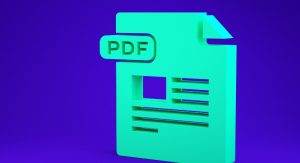Welcome to our comprehensive guide to self assessment payments on account. If you are self-employed and need to file a tax return, understanding the concept of payments on account is crucial. Let’s dive into the details of what payments on account entail and how they affect your tax obligations.
Self Assessment Payments on Account
When it comes to self-employed tax payments, ‘payments on account’ refer to advance payments made towards your tax bill. This includes Class 4 National Insurance contributions for self-employed individuals. In most cases, two payments on account are required each year, unless your last tax bill was less than £1,000 or you paid more than 80% of the previous year’s tax bill.
Each payment on account is equal to half of your previous year’s tax bill. These payments must be made by midnight on 31 January and 31 July. However, if there is still tax to pay after these payments on account, a ‘balancing payment’ must be made by 31 January of the following year. It’s important to note that payments on account do not include capital gains tax or student loan payments.
Understanding how to calculate and view your payments on account is essential. By signing in to your online account, you can easily check your payments on account. Select the option to view your latest Self Assessment return, then choose ‘View statements’ to see the payments you’ve already made on account and the payments you need to make towards your next tax bill.
Payments on account are calculated based on your previous year’s tax bill. However, if your income fluctuates, the actual tax bill may differ from the estimate. It’s important to be aware of the two payment deadlines: midnight on 31 January and midnight on 31 July. The first deadline is for the previous tax year’s balancing payment and the first payment on account for the upcoming tax year, while the second deadline is for the second payment on account for the upcoming tax year.
If you expect your tax bill to be lower than the previous year, you have the option to reduce your payments on account. This can be done online by signing in to your account and selecting the option to view your latest Self Assessment return. Choose ‘Reduce payments on account’ to request a reduction. Alternatively, you can apply by post using form SA303. However, it’s important to avoid reducing your payments on account too much as it may lead to interest and penalties if you underpay your tax.
Now that you understand how self assessment payments on account work, it’s important to know how to make and pay them. There are several methods available, including online banking, CHAPS, personal or corporate credit card payments, and paying at your bank using a paying-in slip from HMRC. BACS and cheque payments by post require three working days processing time.
To ensure you don’t miss your payments on account, setting up a direct debit with HMRC is a convenient option. It takes five working days to process the direct debit the first time it is set up. Additionally, you can choose to set up a Budget Payment Plan for regular payments towards your next tax bill.
In the event of overpayment, you are entitled to a refund. Once you’ve submitted your next tax return, you can choose to receive the refund by cheque, bank transfer, or put it towards your next payment on account tax bill. Conversely, if your tax bill is higher than expected, a balancing payment must be made to HMRC by 31 January of the following tax year, which includes any additional tax owed for the previous tax year as well as payments for capital gains tax and student loans.
By understanding and managing your self assessment payments on account, you can ensure your tax affairs are in order and that you pay the correct amount of tax. Take control of your tax obligations and stay on top of your finances.
How to Calculate and View Your Payments on Account?
To ensure accurate tracking of your payments on account, follow these steps to calculate and view them:
- Sign in to your online account.
- Select the option to view your latest Self Assessment return.
- Click on ‘View statements’ to access the details of your payments on account.
By viewing your statements, you can see the payments you’ve already made on account as well as the payments you need to make towards your next tax bill.
Payments on account are calculated based on your previous year’s tax bill. However, it’s important to note that if your income fluctuates, the actual tax bill may differ from the estimate.
There are two important payment deadlines to keep in mind:
- The first deadline is midnight on 31 January. This deadline covers the previous tax year’s balancing payment and the first payment on account for the upcoming tax year.
- The second deadline is midnight on 31 July. This deadline pertains to the second payment on account for the upcoming tax year.
Ensuring that you meet these self assessment tax deadlines will help you stay on top of your tax obligations and avoid any penalties or interest charges.

How to Reduce Your Payments on Account?
If you expect your tax bill to be lower than the previous year, you can ask HM Revenue and Customs (HMRC) to reduce your payments on account. This can be done online by signing in to your online account, selecting the option to view your latest Self Assessment return, and choosing to ‘Reduce payments on account’. Alternatively, you can apply by post using form SA303. However, reducing payments on account too much can result in interest and penalties if you underpay your tax.
How to Make and Pay Your Payments on Account?
When it comes to managing your HMRC payments on account for self-assessment, there are various methods you can choose from to ensure you meet the tax return deadlines. Whether you prefer the convenience of online payments or the traditional approach of paying at your bank, HMRC offers multiple options to suit your needs and preferences. Let’s explore the different ways you can make and pay your payments on account.
Online Payments
If you prefer the ease and speed of online banking, you can make your HMRC payments on account through your online banking platform. Simply log in to your account and follow the instructions to set up a payment to HMRC. You can choose to transfer funds directly using online banking, make a CHAPS payment, or use a personal or corporate credit card for your payment. Ensure that you have the necessary funds available in your account by the tax return deadlines to avoid late payment penalties.
Paying at Your Bank
If you prefer to make your payments in person, you can visit your bank and use a paying-in slip provided by HMRC to make your payment. Simply fill out the required details and hand it in at a branch of your bank. This method allows you to make payments using cash or cheques, providing you with flexibility and convenience. However, do keep in mind that cheque payments and BACS payments made by post will require three working days processing time, so plan your payment accordingly to meet the HMRC payment deadlines.
Setting Up a Direct Debit
If you want to ensure that you never miss a payment on account and avoid any potential late payment penalties, setting up a direct debit with HMRC is a convenient option. By authorizing HMRC to directly debit your nominated bank account, you can automate your payments and have peace of mind knowing that your payments are made on time. Be aware that it takes five working days for HMRC to process the direct debit setup for the first time, so make sure to set it up well in advance.
Budget Payment Plan
If you prefer to make regular payments towards your next tax bill, you can consider setting up a Budget Payment Plan. This option allows you to make installment payments on a monthly or weekly basis, ensuring that you spread out your payments and have better control over your finances. To set up a Budget Payment Plan, you can contact HMRC directly or check their online resources for more information on the application process.
Avoiding Penalties
It is essential to meet the HMRC payment deadlines to avoid interest and late payment penalties. Missing a payment deadline can result in additional costs and may have implications for your future payments on account. Make sure to plan your payments ahead of time, keep track of the tax return deadlines, and allocate funds to meet your obligations.

| Payment Method | Processing Time |
|---|---|
| Online Banking | Immediate |
| CHAPS | Immediate |
| Credit Card | Immediate |
| Paying at Bank | Depends on bank processing times (usually within 3 working days) |
| Direct Debit | 5 working days for the first setup |
| Budget Payment Plan | Depends on the agreed payment schedule |
By choosing the most suitable payment method and ensuring timely payments, you can effectively manage your payments on account and meet HMRC’s payment deadlines. This will help you avoid unnecessary penalties and maintain a good standing with HMRC.
Payment on Account Refunds and Balancing Payments
If you have overpaid your tax through payments on account, you are entitled to a refund. The refund is processed once you’ve submitted your next tax return, and you can choose to receive it by cheque, bank transfer, or put it towards your next payment on account tax bill. On the other hand, if your tax bill is higher than expected, you will need to make a balancing payment to HMRC by 31 January of the following tax year. This balancing payment includes any additional tax owed for the previous tax year as well as any payments for capital gains tax and student loans.

| Scenario | Action |
|---|---|
| You have overpaid your tax through payments on account | Submit your next tax return Choose your preferred refund method: cheque, bank transfer, or credit towards next payment on account tax bill |
| Your tax bill is higher than expected | Make a balancing payment to HMRC by 31 January of the following tax year Include additional tax owed for the previous tax year, capital gains tax, and student loans |
Conclusion
Understanding self assessment payments on account is crucial for UK taxpayers. By making these advance payments, individuals can spread out their tax payments throughout the year and avoid paying tax in arrears. Calculating and viewing payments on account accurately is important, as is considering reducing them if your tax bill is expected to be lower than the previous year.
Making and paying your payments on account can be done through various methods, such as online banking, direct debit, or setting up a Budget Payment Plan. It is essential to meet the payment deadlines to avoid interest and penalties. Being aware of payment on account refunds and balancing payments ensures that your tax affairs are in order and that you pay the correct amount of tax.
If you’re looking for more flexibility in managing your tax payments, consider exploring self assessment instalments and potentially claiming to reduce your payments on account. By taking control of your financial obligations, you can ensure a smoother and more organized approach to your tax responsibilities.
FAQ
How can I check my payments on account?
To check your payments on account, sign in to your online account and select the option to view your latest Self Assessment return. Then, select ‘View statements’ to see the payments you’ve already made on account and the payments you need to make towards your next tax bill.
How are payments on account calculated?
Payments on account are calculated based on your previous year’s tax bill.
Can I reduce my payments on account?
Yes, if you expect your tax bill to be lower than the previous year, you can ask HM Revenue and Customs (HMRC) to reduce your payments on account.
Can I set up a direct debit for my payments on account?
Yes, setting up a direct debit with HMRC is a convenient way to ensure you don’t miss your payments on account. It takes five working days to process the direct debit the first time you set it up.
What is a Budget Payment Plan?
A Budget Payment Plan allows you to set up regular payments towards your next tax bill.
What happens if I miss a payment deadline?
If you miss a payment deadline, you may be charged interest and late payment penalties.
Can I get a refund for overpaid tax through payments on account?
Yes, if you have overpaid your tax through payments on account, you are entitled to a refund. The refund is processed once you’ve submitted your next tax return.
How can I receive my refund?
You can choose to receive your refund by cheque, bank transfer, or put it towards your next payment on account tax bill.
What happens if my tax bill is higher than expected?
If your tax bill is higher than expected, you will need to make a balancing payment to HMRC by 31 January of the following tax year. This balancing payment includes any additional tax owed for the previous tax year as well as any payments for capital gains tax and student loans.
Why is it important to understand self assessment payments on account?
Understanding self assessment payments on account is crucial for UK taxpayers as it allows individuals to spread out their tax payments throughout the year and avoid paying tax in arrears.




